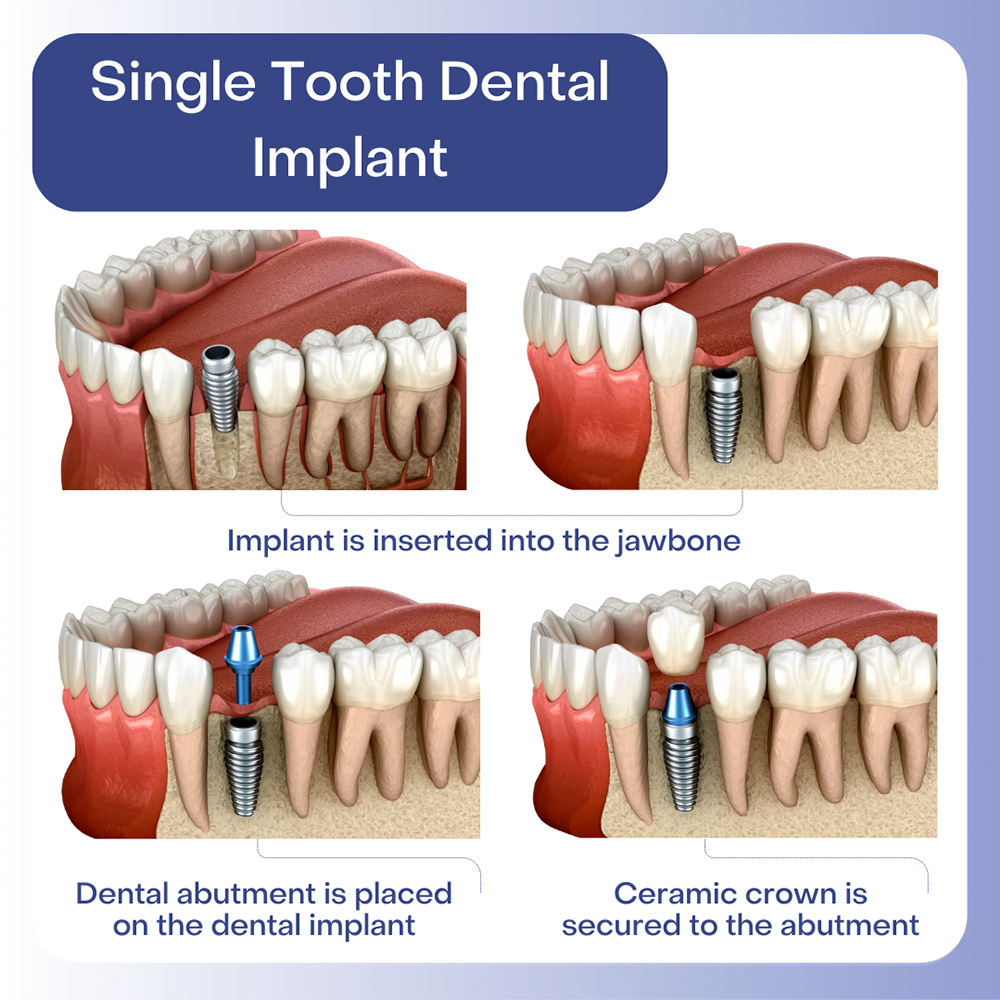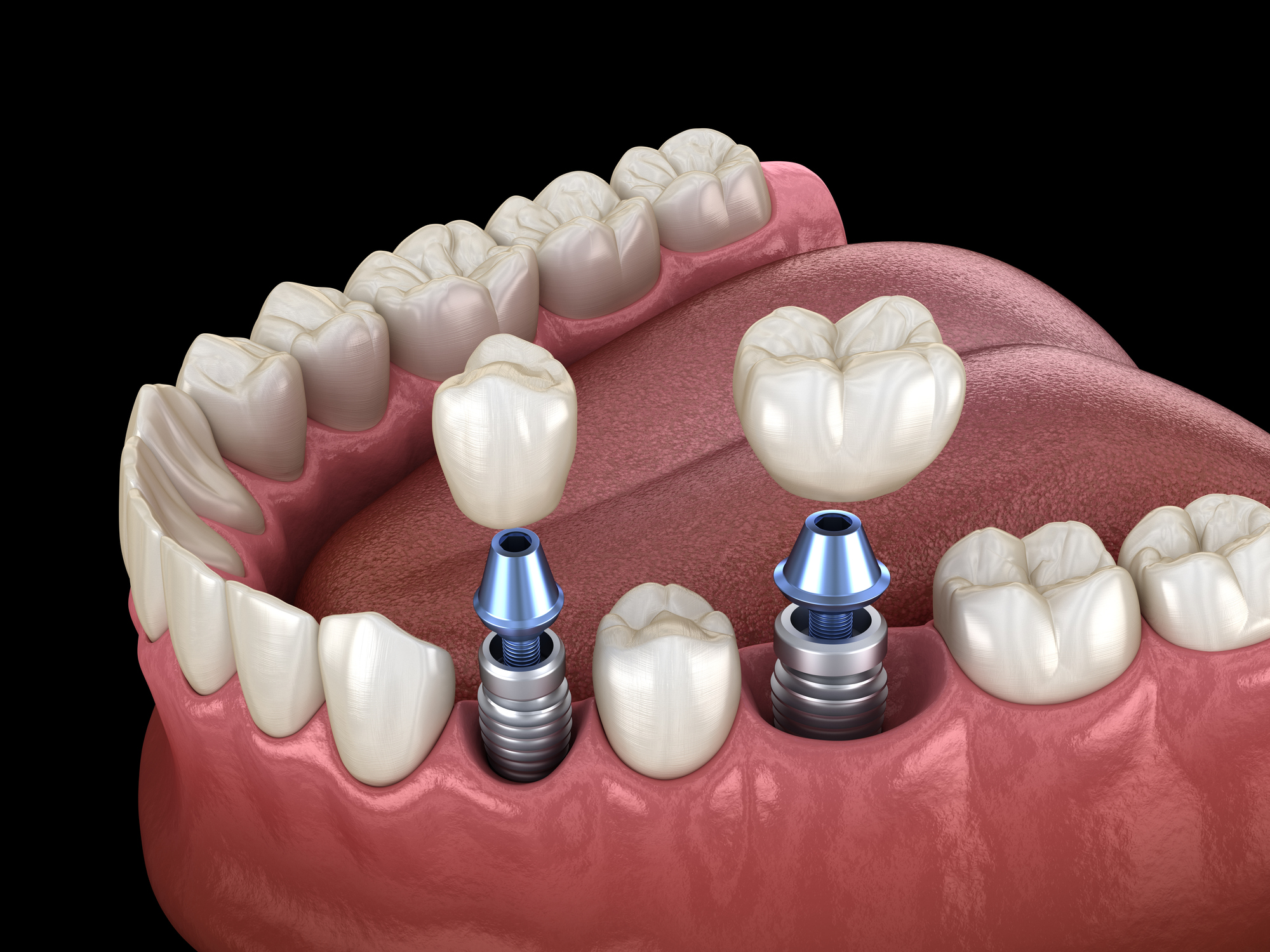The Ultimate Guide To Dental Sense
Getting My Dental Sense To Work
Table of Contents3 Easy Facts About Dental Sense DescribedHow Dental Sense can Save You Time, Stress, and Money.7 Easy Facts About Dental Sense DescribedHow Dental Sense can Save You Time, Stress, and Money.
are medical gadgets surgically dental implanted right into the jaw to restore a person's capacity to chew or their appearance. They offer support for fabricated (fake) teeth, such as crowns, bridges, or dentures. When a tooth is lost due to injury or illness, an individual can experience problems such as fast bone loss, malfunctioning speech, or changes to chewing patterns that result in discomfort.Dental implant systems include an oral implant body and dental implant joint and may also include an abutment addiction screw. Same day dental implants. The oral implant body is surgically put in the jawbone instead of the tooth's origin. The oral implant joint is typically connected to the dental implant body by the abutment addiction screw and extends through gums into the mouth to sustain the attached fabricated teeth
(https://www.storeboard.com/dentalsense)Structure of The Dental Implant System selecting oral implants, talk to your oral supplier regarding the prospective advantages and threats, and whether you are a prospect for the treatment. Points to consider: Your overall health is a vital consider determining whether you are a good prospect for oral implants, exactly how long it will take to recover, and for how long the dental implant might remain in location.
Smoking may influence the recovery procedure and decrease the lasting success of the dental implant. The healing procedure for the dental implant body may take several months or longer, throughout which time you typically have a temporary joint in location of the tooth. the oral implant treatment: Thoroughly adhere to the dental hygiene instructions provided to you by your dental provider.
The smart Trick of Dental Sense That Nobody is Discussing
Implant failure can cause the need for another medical treatment to deal with or replace the implant system. Recovers the capacity to chew Restores aesthetic appearance Helps keep the jawbone from reducing due to bone loss Maintains the health of the surrounding bone and gum tissues Aids keep surrounding (nearby) teeth secure Enhances high quality of life Damage to bordering natural teeth during dental implant placement Injury to the surrounding cells during surgical treatment, such as sinus perforation Injury during surgical treatment (for example, fracture of surrounding jawbone) Poor function, such as feeling like the teeth do not bite together generally An experience that the tooth hangs or twisting in position resulting from an abutment screw loosening Implant body failure (looseness of the dental implant body) because of systemic infection, which may be most likely in people with unchecked diabetes mellitus because of regional infection in bone and gum tissues supporting the dental implant body because of delayed recovery, which might be more probable in individuals who smoke Trouble cleaning the gum tissues around the dental implant, resulting in bad dental hygiene Unattended gum illness Post-surgical feeling numb due to nerve impingement or damage Constantly inform healthcare providers and imaging technicians that you have oral implants before any type of magnetic vibration imaging (MRI) or x-ray treatments.
FDA is not knowledgeable about any kind of damaging events reported for MRI or x-ray treatments with dental implants. Dental implants systems are normally made of products index that comply with international consensus standards of the International Company for Standardization (ISO) or ASTM International. These requirements have details of what makes a secure product.

An oral implant is a framework that changes a missing out on tooth. With screw-like tools, the cosmetic surgeon inserts a dental implant right into the jawbone, and it acts as a support for a synthetic tooth, called a crown.
The 20-Second Trick For Dental Sense
Some people are not qualified for dental implant surgery. It is for oral specialists to operate individuals with: severe illnessuncontrollable metabolic diseasebone or soft tissue disease or infectionIf these concerns are fixed, a person can have the surgical treatment. In, dental doctors abstain from operating individuals with: If people with any one of the above undertake dental implant surgical treatment, there is a higher risk of the implant failing.

Dental dental implant surgical procedure is an individualized procedure. Offer you time to heal. Connect the message and last crown, bridge or denture.
Next, your surgeon will very carefully place the oral implant right into your jaw. Ultimately, your doctor will rearrange your gum tissues and close the laceration with stitches. If your implant is near the front of your mouth, your dental professional will make a momentary tooth for you to put on up until you recover. This way, you won't have a gap in your smile while you recuperate.
Fascination About Dental Sense
Your service provider can inform you what to expect in your scenario. During the healing stage, your jawbone must fuse to the dental implant. This procedure, called osseointegration, is important for stability and long-term success. This process can take anywhere from 3 to 9 months. In many cases, it might take longer.
Once your implant heals, your dentist can affix the abutment (small port post) and your final reconstruction (crown, bridge or denture). This generally takes about one hour to complete and might call for a second small surgical procedure. You should not feel any discomfort during your dental implant treatment due to the fact that your copyright will utilize medication to numb your gums.